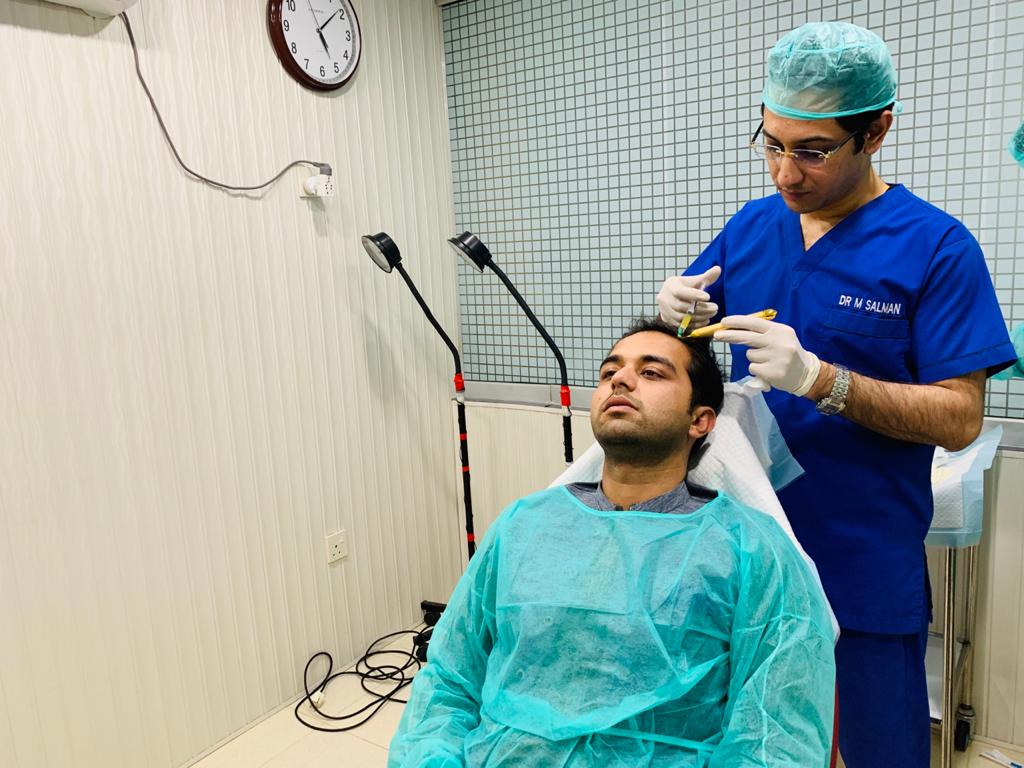To be straightforward, the ideal result of hair transplantation is thick hair covering all bald areas in the transplanted area with a natural-looking hairline.
In the last few years, the Hair Transplant service has evolved dramatically. Hair plugs were used to conceal receding hairlines in the 70s and 80s. They never looked natural, of course. However, it was the best solution in those days for people who were suffering from baldness or receding hairlines. However, things have changed since then.
The advancement in technology led to the invention of revolutionary hair transplantation procedures giving patients a natural-looking hairline, which is permanent and satisfactory.
What is hair transplantation?
In short, hair transplantation is a minimally invasive surgical procedure that involves transplanting hair in the recipient area (head, beard, eyebrows, body etc.), and the hair is taken from the donor area (mostly the back of your head, beard and chest). The hair transplantation techniques are classified into two types based on how the donor’s hair is extracted. They are FUE (follicular unit extraction) and FUT (follicular unit transplantation).
Based on the size of the recipient area, both procedures are carried out in a single session or might need to undergo multiple sessions. During the initial phase of the investigation itself, it is determined the number of subsequent sessions required.
The ideal results after a hair transplant
After any hair transplant procedure, the ideal results are based on some factors;
- Graft survival after a hair transplant
- Experience of the hair transplant surgeon and team
- Suitability of the patient for a hair transplant
- The clinic’s infrastructure
- Post-surgical hair care
Graft survival after a hair transplant
The more the grafts survive, the better the results. Unlike other organ transplants, some patients fear that their grafts may be rejected at the recipient site. However, in many studies, it has been reported that no rejection occurs because the grafts are taken from the patient’s own body. Therefore, the chance of survival is as high as 95% to 99%. Grafts transplanted to a new location will survive and grow new hair, at least in the short term. They are capable of surviving and adapting to their new environment.
Experience of the hair transplant surgeon
Hair transplant requires a team of surgeons. The experience of the hair transplant surgeon also matters for ideal results after hair transplantation. In order to deliver the best results, the surgeon must be able to assess each case individually because every hair fall problem is unique. So an experienced surgeon can accurately assess these factors and recommend the technique best suited to the patient’s needs.
Patient’s ability to undergo a hair transplant
Some experts say that, in order to undergo hair transplantation surgery, no minimum age is required. However, some say that the minimum age for hair transplantation is considered to be 25-30 years of age since hair loss stabilizes at that age. It is possible to lose new hair until your late 30s, even after hair transplantation at that age. Such cases will experience better results once hair loss stabilizes.
The patient will enjoy a more desirable outcome if the donor’s hair is healthy. This is because the surgeon will be able to access an adequate area for graft removal.
The hair transplant technique & technology used.
Better results from a hair transplant are highly dependent on the procedure and the tools used during the procedure. For example, the FUE hair transplant procedure can provide effective results, and in recent years, this FUE technique has evolved into the SHT- FUE method, which can provide even more precise results.
Thus, choosing a clinic that offers the latest techniques is a wise decision. Ensure the surgeons have extensive experience in operating these newest technologies when you choose the clinic.
Medication after hair transplantation
A specific medication will also be provided to maintain the hair transplant results. Hair loss or thinning can be prevented or slowed down by this medication.
Post-surgical hair care
Post-surgical hair care plays a dominant role in the final outcomes. Follow the surgeon’s instructions carefully. Make sure to follow the doctor’s directions for washing and styling your hair. Consult the surgeon if you observe any swelling or itching at the site of the surgery.
At Best Hair Transplant Centre, we are committed to helping our patients to achieve their hairline of choice, taking into account both their donor area and the cause of their hair fall.

